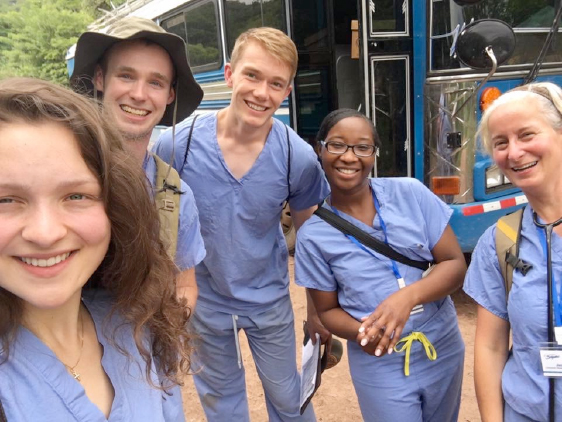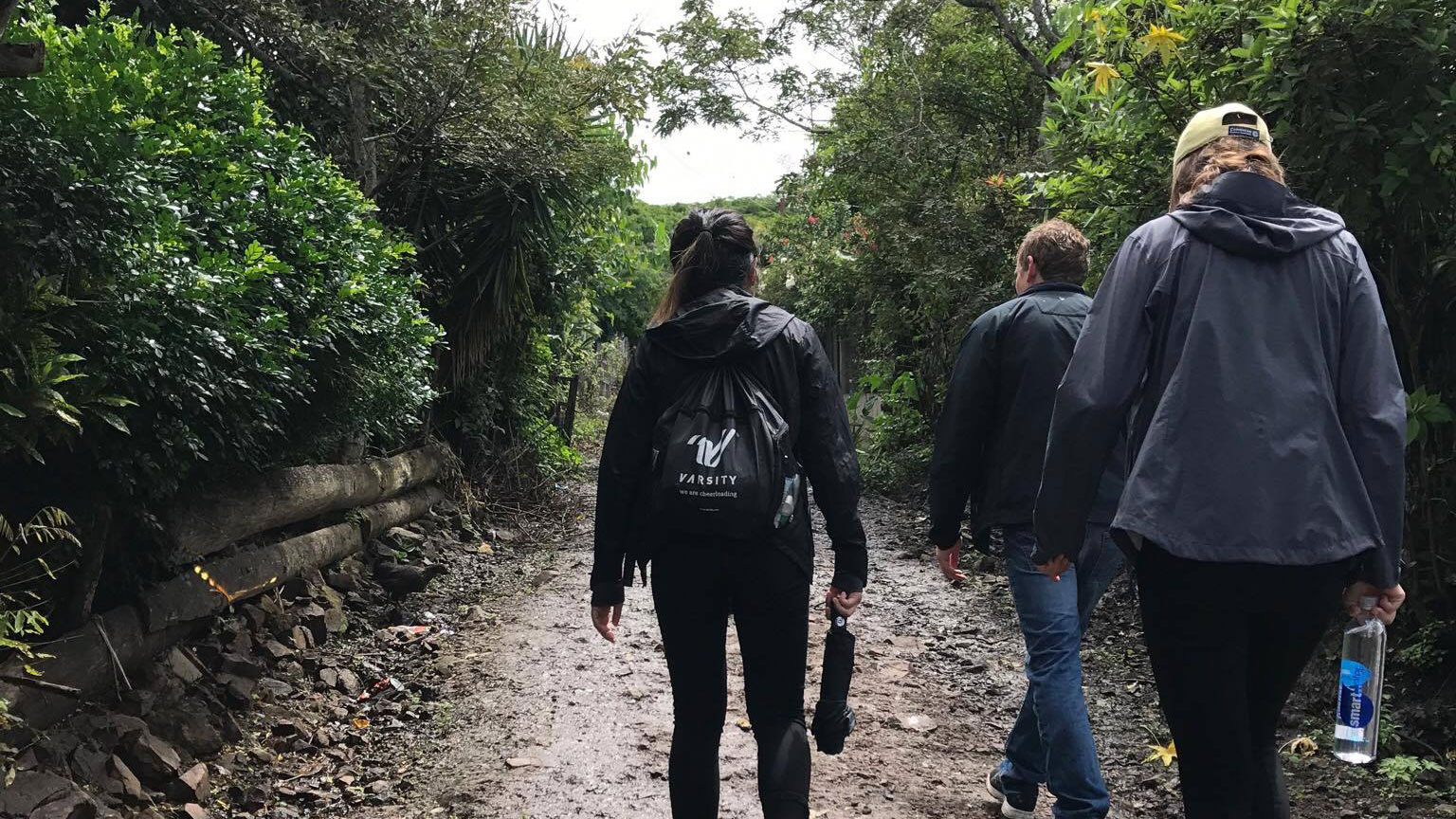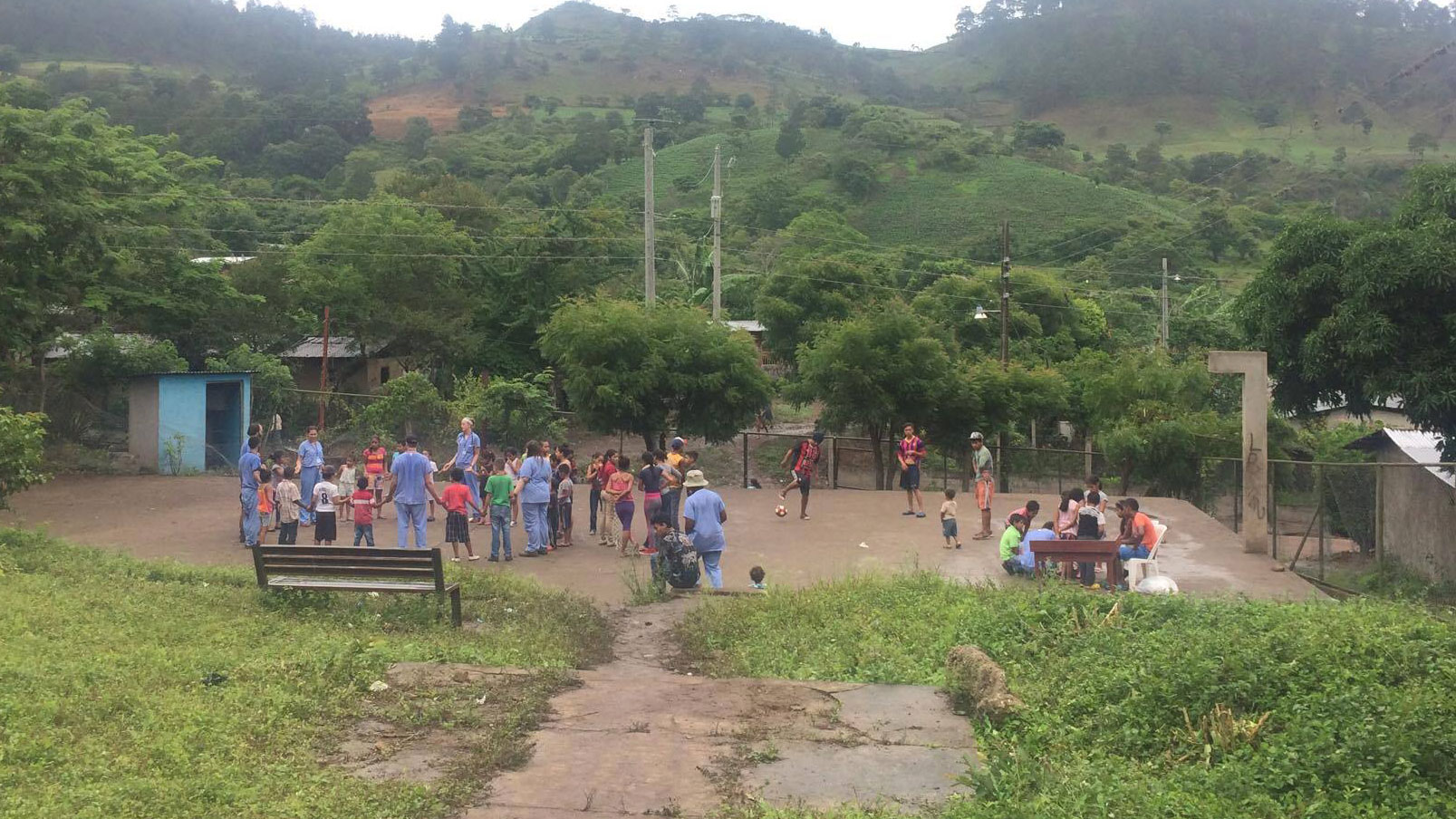ASU students discover passion for holistic health care in Mayo Clinic Global Medical Brigade

When Mayo Clinic School of Medicine in Rochester, Minnesota, readied a group of volunteers for its summer Medical Brigades Volunteer Program to Nicaragua, three Arizona State University students seized the chance to join them for a life-changing medical outreach.
Selected by ASU’s Pre-Health Internship Program in the Office of Clinical Partnerships through a rigorous application and interview process, the students traveled to rural areas of Nicaragua with Mayo Clinic physicians and medical students to provide much-needed medical support. All three ASU members knew the Spanish language, a requirement for their selection.
The three students chosen — Roseanne Nguyen (nutrition, College of Health Solutions), Cristina Musch (biochemistry, College of Liberals Arts and Sciences), and Chance Marostica (biological sciences, College of Liberals Arts and Sciences, and Barrett honors student) — translated for the Mayo team. They also learned how to administer primary care in a holistic manner, delving into all aspects of a patient’s mental, physical and psychological health.
“This trip redefined how I would like to practice medicine,” said Marostica. “If you want to heal someone, you can’t first look at their symptoms. You have to look at the person as a person. Medicine without a human connection is hollow.”
During the 10-day trip, the Mayo Clinic team offered medical services to 2,200 residents of underserved and impoverished rural areas. In addition to physical and dental exams, psychological counseling, medications and a health fair, they also journeyed down muddy backroads to treat patients unable to travel. Long lines of hopeful people formed as soon as each day’s clinic opened. The ASU students helped perform triage, conducting initial interviews with the patients and taking vital signs, and they packaged medications for patients and local clinics, in tandem with translating for the Mayo Clinic physicians, staff and students.
Volunteers traversed muddy paths to make house calls when vehicles couldn’t traverse the roads.
“Our roles changed every day,” said Nguyen. “We rotated between being a dental assistant, taking patient history, packaging medications. We also played with the kids for a few hours. So it gave us a good feel ofwhat can happen in a clinic.”
Mayo Clinic’s global medical brigades visit Nicaragua four times a year. Along with full medical evaluations, they teach preventative methods and the basics of living a healthy life to the community.
Although the diagnoses of patients differed, there were two primary causes of ill health that the students found. Due to the lack of access to pure water, many needed a prescription for parasites, which resulted in chronic headaches, fever and gastrointestinal disorders.
What Musch found most striking was the amount of stress that affected many people, particularly women.
“Many people just needed someone to talk to and get some advice on how to handle their situations,” Musch said. “They didn’t want to talk to others in their small town for fear of gossip.”
A lot of mothers were afraid of being alone during the long months that their husbands had to be away for work, said Musch.
“Some of the women were in an abusive relationship, but were afraid to leave because they had children and no place else to go,” she said. “When they came in, they had these troubled eyes, then gave us a hug and thanked us for listening to them. They told me they prayed to God to have someone listen to them.
“Some of the psychiatrists gave them exercises to relieve the headaches and stress. Some cases were so extreme that they could only give them medication to help them sleep at night so they didn’t lay awake thinking about their fears and problems.”
Volunteers took turns playing games with children while parents waited for clinic visits.
All the ASU students spoke of how kind and welcoming and palpably grateful the villagers were to see the brigade. They were particularly struck by the peoples’ strength and determination to create a better life, despite the poverty and difficulty in their lives.
Marostica remembered one woman he met who “came in distressed and extremely concerned for her health, and she walked out with tears of joy. She works so hard and really just wanted someone to talk to. We spent over an hour talking about the hardships of life, but more importantly, how to still find joy. I can't believe the power that resides in empathy and compassion for others.”
The community was hungry for all of the information shared in the health clinics, particularly on women’s health, he says: “I am confident that they will continue to share it. Education is empowerment.”
“The most important thing I learned from this trip is the power of empathy,” Nguyen said. “The compassion that came from everyone on this team was unbelievable. On our last clinic day we were planning on leaving at noon. When we arrived at the town, hundreds were waiting outside the clinic. Everyone worked extra hard that day until 3 p.m., so we could see every single patient.”
After powering through lunch break and forgoing their afternoon plans, the team broke a record, seeing 300 patients on what was intended to be a half-day.
The ASU students received advice, encouragement and knowledge from the trip’s Mayo Clinic students and physicians, which has already shaped their thinking about their career paths and interests.

ASU student Chance Marostica (center) translated for medical students and doctors in San Jose de Pire.
“The consulting doctors taught me how important it is to learn about someone's past, their family, interests and passions before you dive into their health problems,” Marostica said. “It gives insight into some of the underlying causes of an ailment, but more importantly, it forms a clinician-patient bond of trust and empathy.”
Nguyen said that talking to Mayo medical students inspired her and increased her confidence in choosing a medical career.
“Keep an open mind and heart,” she advised other students. “Perspective gained from medical outreach activities will ignite your passion for health care.”
Musch said she could relate to the Nicaraguan villagers, as she grew up in a rural area in Mexico with a lack of access to water.
“Like these people, my parents had to search for water. However, what I took away from this was that I wasn’t the one being helped this time; I was the one helping. I’m not just some girl from a poor country, but I’m actually doing something for someone else’s life.”
Top photo: ASU students Roseanne Nguyen (left) and Cristina Musch help set up clinic in La Laguna, Estelí, as patients began to form lines to see the Mayo Clinic team.
More Health and medicine

Reducing waste in medical settings
Health care saves lives, but at what cost? Current health care practices might be creating a large carbon footprint, according to ASU Online student Dr. Michele Domico, who says a healthier…

ASU offers bilingual counseling to Spanish speakers
Arizona is one of the five states in the nation with the highest percentage of Hispanic residents, according to the U.S. Department of Health and Human Services Office of Minority Health, and …

College of Health Solutions launches first-of-its-kind diagnostics industry partnership to train the workforce of tomorrow
From 2007 to 2022, cytotechnology certification examinees diminished from 246 to 109 per year. With only 19 programs in the United States, the cytology workforce that stands at the front line of…



